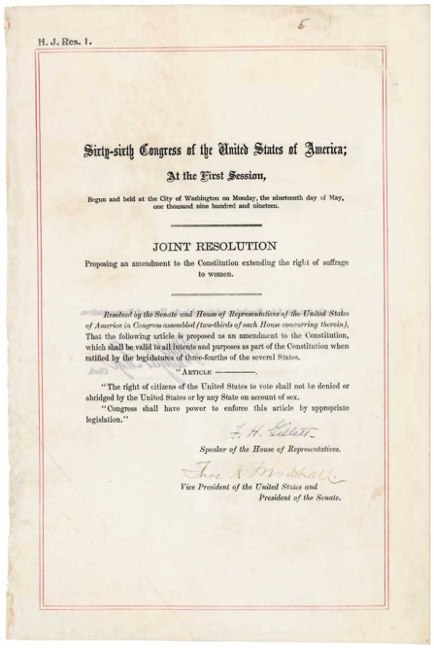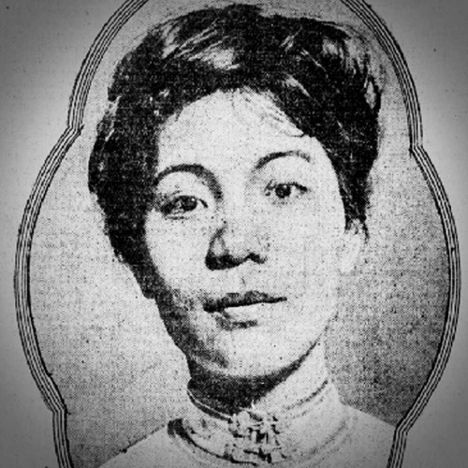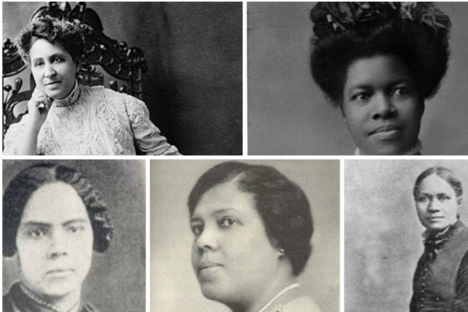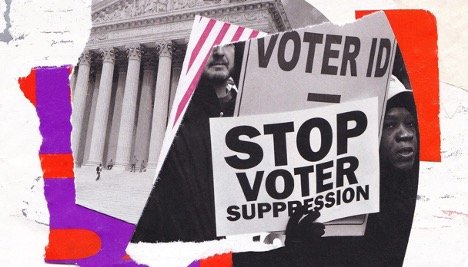Our History on Voting
We believe in the power of women to create a more perfect democracy.
-

1920
White women win the right to vote.
The 19th Amendment was first introduced to Congress in 1878 and finally certified 42 years later on August 26, 1920. The path to women’s suffrage was complicated and sometimes ugly.
History books tend mostly to credit the courage and tenacity of white women. It is past time to amend the history books and tell the real story of the suffrage movement. It is past time we all celebrate the women of color who were at the center of the movement alongside their white counterparts. And it is past time for our country to acknowledge that when the 19th Amendment was ratified, many women still weren’t able to cast a ballot because of Jim Crow laws that denied them full enfranchisement.
-

1952
Asian Americans win the right to vote.
Citizenship and ability to vote are inextricably intertwined. Without one, the other is impossible to achieve. Asian Americans were excluded from voting until the Immigration and Nationality Acts of 1952 & 1965, three decades after the 19th Amendment.
Despite being barred from citizenship and from voting, Asian American suffragists such as Dr. Mabel Ping-Hua Lee worked alongside white native-born women in the years leading up to 1920. Dr. Ping-Hua Lee advocated within their communities and even marched in suffrage parades. Today, as the nation’s fastest-growing racial group, Asian Americans are quickly becoming an electoral force at the polls, making it imperative for Asian Americans to remain vigilant and active in ensuring the right to vote.
(newspaper portrait of Dr. Mabel Ping-Hua Lee)
-

1962
Native Americans win the right to vote in all states.
American Indians didn’t become U.S. citizens until the passage of the Indian Citizenship Act in 1924, and even then, they continued to be denied voting rights until the passage of the Voting Rights Act of 1965 (VRA).
Denial of citizenship, property requirements, and sanctioned violence against voters barred Native Americans from the polls. Literacy tests were used to disenfranchise racial minorities as late as 1970.
-

1965
African Americans win the right to vote.
A terrible and bloody Civil War freed enslaved Americans. The Fourteenth Amendment to the Constitution (1868) granted African Americans the rights of citizenship. However, this did not always translate into the ability to vote. Black voters were systematically turned away from state polling places. To combat this problem, Congress passed the Fifteenth Amendment in 1870. It says:
“The right of citizens of the United States to vote shall not be denied or abridged by the United States or by any state on account of race, color, or previous condition of servitude.”
Yet, states still found ways to circumvent the Constitution and prevent blacks from voting. Poll taxes, fraud, intimidation, and literacy tests deliberately kept African Americans from voting and fully participating in democracy. A full 50 years after the 15th Amendment passed, African Americans did not have full voting rights, especially in the South. The fight for African American suffrage raged on for decades.
Many brave and impassioned black women suffragists like Sojourner Truth, Ida B. Wells, Fannie Lou Hamer, Diane Nash, and Mary Church Terrell have their place in history working towards voting equality. A place equally as prominent as that of white suffrage leaders. Famous photographs of suffrage marches and historic meetings often failed to capture the many African American women who fought equally as courageously as white women to win the vote. Every little girl should learn about women’s history in America and see themselves represented, and not only during Black History Month.
Then, the passage of the Voting Rights Act of 1965 created a significant change in the status of African Americans throughout the South and across the country. The Voting Rights Act prohibited the states from excluding African Americans from voting. Prior to this, only an estimated 23% of voting-age blacks were registered nationally, but by 1969, the number had jumped to 61%.*
*Library of Congress- “Voting Rights for African Americans”
-

2013
The U.S. Supreme Court rolled back voter protections in the Voting Rights Act in the Shelby County v. Holder decision of June 25, 2013.
The Court struck down the law’s formula for determining which states and localities should be required to get federal approval for changes to voting policies to ensure that they were not racially discriminatory. Since that time, we have seen countless attacks on the right to vote—too often targeting racial minorities, as has been the case throughout our country’s history. In the aftermath of this decision, we have seen rollbacks to early voting, unjust voter purges, and strict voter photo ID laws that make it harder for young people, women, people of color, and individuals with low incomes to register and exercise their right to vote.
The 2013 Supreme Court decision swung open the door for states to enact restrictive voting laws, making it harder for people of color to vote.
-

2020
Women’s Equality Day.
On August 20th, 2020, the United States celebrated 100 years since the 19th Amendment to the US Constitution was adopted, guaranteeing women the right to vote. As we celebrate this great achievement, we do so with recognition that women’s suffrage was not perfect. Progress towards a more perfect democracy is often messy, but we can’t allow the ends to justify the means, especially if perpetuates oppression. Let us use the lessons of our history to inform our present and our future. Let us continue to seek ways to ensure all eligible voters have their voices heard and their votes counted.

